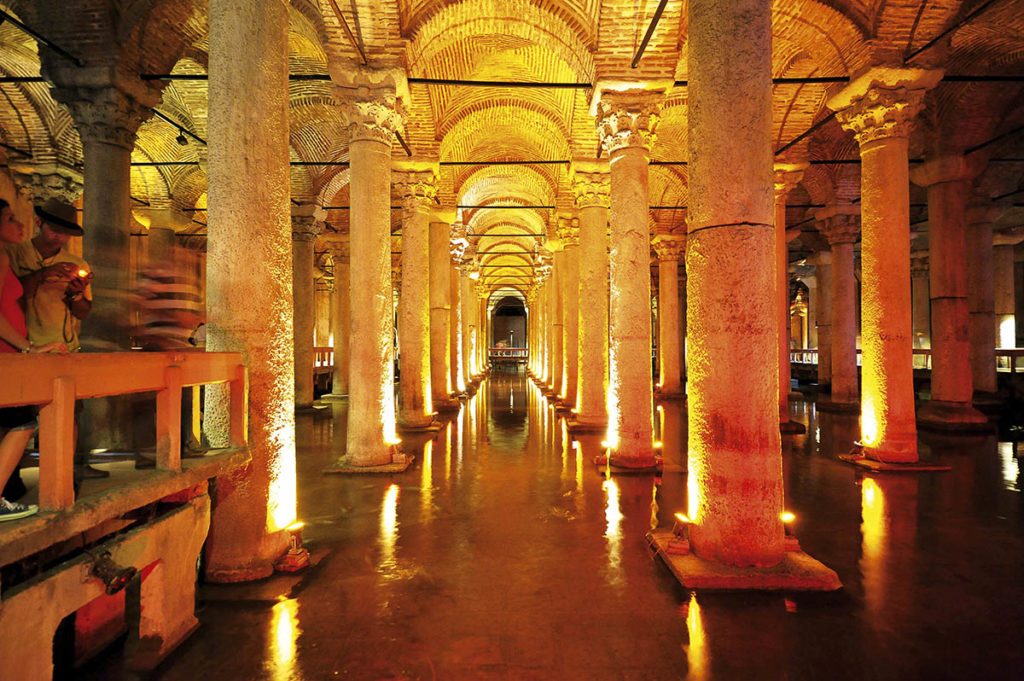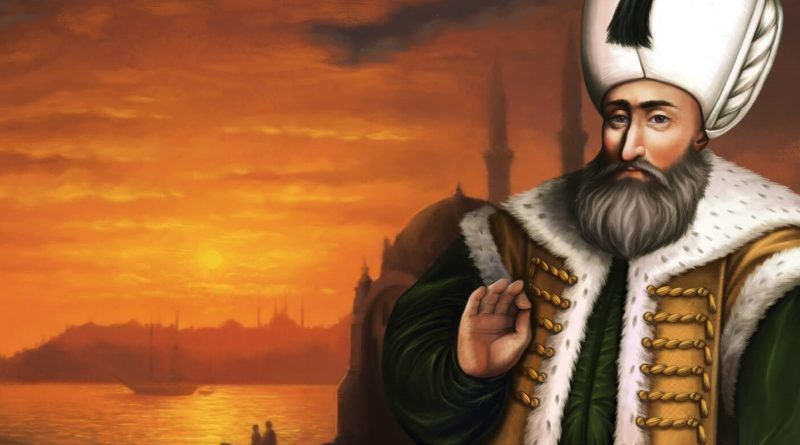Suleiman The Magnificent
Suleiman The Magnificent. Who is Sultan Süleyman the Magnificent who made the Mediterranean a lake and kept the golden age for the Ottoman Empire, the tenth sultan of the Ottoman Empire and the 2779 gazel written by the Muhibbî?

Süleyman arrived in the world on 6 November 1494 in Trabzon, as the son of the governor of Selim I of Trabzon . Annesi Ayşe Hafsa is the Valide Sultan .
Suleiman The Magnificent, who spent his early childhood in the city he was born with his infantbrother Yahya Efendi , began studying in areas such as science, history, religion, literature, and military in Enderûn at Topkapi Palace when he was seven years old.
After the training period, Süleyman, who was appointed as the Şarkî Karahisar Sancak Beyi in 1508, was appointed to different places for his insistence on his uncle Amasya Sancak Beyi Ahmed . Finally, after his father Selim I ascended to the throne, he became Saruhan Sancak Bey in 1513 .
He has met here with the Parthian Abraham .
After about seven years Saruhan Sancak Principality, after his father Yavuz Sultan Selim ‘s conversion in 1520, he became the only male child, so he had no problem in his life.
FIRST EXECUTIONS
Shortly after I became a Suleiman sultan, Sham Beylerbeyi Canberdi Ghazali started a riot without defining the new sultan. On January 27, 1521, units under the command of Ferhad Pasha suppressed the rebellion by overthrowing Ghazali in the region near Damascus. After this, Ayas Mehmed Pasha was appointed to Damascus Beylerbeyliğine .
Sultan Süleyman’s first campaign was in Belgrade. (May 18, 1521) Having received cities around Belgrade, the city, which was surrounded on August 1, 1521, surrendered on August 29.
A year later, Sultan Süleyman’s campaign took over Rhodes in the Mediterranean, the Knights of the Hospitalier. For this siege, the State-i Aliyee Fleet, which descended into water in June of 1522, was in Rhodes on July 28th. This tremendous army of about 100,000 soldiers and 400 ships had officially taken Rhodes after the knights surrendered after the siege lasted six months.
MOHAÇ WAR
Although the power of Hungary was broken in 1521 when Belgrade passed through the hands of the Ottomans, the danger of the Catholic world was not fully passed. On 10 March 1526, Suleiman The Magnificent, who decided to organize a voyage on Hungary, the forerunner of the Catholic world, gave the first order of war preparations.
On April 23, 1526, the army of 60,000 people and 300 ball came out.
The Hungarian army established a camp on the Mohaç plain to meet the Ottoman Empire. Hungarian King II. Lajos was at the beginning of the army.
Sultan Süleyman, who prevented the Hungarian army from receiving aid from the circles he sent to the surrounding area, came to the Mohaç plains on 28 August 1526. Collecting the war council without losing any time, the Sultan had an idea about the war from the experienced soldiers. The latest Yahyapasazade Malkoçoğlu Bali Bey‘s mass assault was considered dangerous, and attacks on the sides and back of the Hungarian army would be more effective.
The Hungarian army, which split into two factions in accordance with its own war plan, was attacked on August 29th.
The Rumeli Army, which welcomed the attacks of the Hungarian forces, was withdrawn after a while, and the Hungarian soldiers who began to chase them were within the reach of the Ottoman artillery.
The second Hungarian ranks, which managed to enter the Ottoman army while the artillery fire continued, were held at the center of the Ottoman Army for about half an hour and intensified fire by the newcomers.
The Hungarian army, which suffered quite a lot of casualties under this fire, was “wasted” according to Ottoman sources.
The end of the Mohaç War is the victory of the absolute State-i Aliyye.
It was the most powerful line of defense of post-war Ottoman Christianity.
Janos Szapolyai was elected by the Hungarian throne parliamentary of the Hungarian emancipated after the killing of the king . The Szapolyai’s request for help from the Ottomans would lead to Ottoman-Austrian wars and then to the First Vienna siege, as some sections did not accept the situation , so the King of the Austrian Archduke I. Ferdinand elected.
VIENNA ISSUE
Ferdinand I. Ferdinand, after the defeat of Szapolyai, asked for help from the Ottoman Empire and Suleiman The Magnificent wanted to strengthen the Austrian Empire on 10 May 1529.
On August 18, the Mohaç plain was reached and together with 6000 people participated in the Ottoman Army in Szapolyai, killing Sultan Süleyman’s hand.
On the 8th of September, one of the gates of the castle of Budin was seized, and the soldiers defending the castle were delivered on condition that their lives were forgiven. After the Ottomans achieved such great successes in a short time, they realized that resistance would be ridiculous . Petru came to the camp and allegiance.
On September 22, Suleiman The Magnificent passed the Austrian border and on September 27, the capital began to besiege.
A fear began to be felt in all of Europe, when Sultan Süleyman the Magnificent would move with an army of 120,000 people. At that time, they had helped Vienna, leaving even the sectarian battles at the far end. Ferdinand left the city in fear and left Nicolos, a more experienced soldier. According to Nicolos, as a war against self-defense, the Turkish army completely burned down the neighborhoods near Vienna without coming, built a second fortification within twenty steps from the first fortification line, and took necessary precautions to defend it by planting stakes in the Danube coasts. In order to protect against the burning effects of the Ottoman humblers, they demolished the wooden roofs of the houses and removed the pavement of the streets to reduce the influence of the cannons. In addition, two months to supply enough food,
Sultan Suleiman, who struck the castle for seventeen days after the siege began, had damaged the city walls. Meanwhile, Nicolos died with a shot hit. The siege was prolonged by the effect of the winter moon, and besides the seasonal conditions and the late arrival of ammunition, the siege became very difficult.
In addition to all these difficulties, when the intelligence prepared by the German army for helping Vienna came, Sultan Süleyman gave the order to stop the attack. On 16 October, the army arrived in Istanbul on 16 December.
ISTANBUL TREATY
According to this treaty signed between the Ottomans and the ambassadors sent by Ferdinand who acknowledged that there was no other choice than to get along well with the Ottomans;
Hungary was considered to be the Ottoman land.
Janos was ruled by Szapolyai.
It was accepted that 30.000 gold tax was given to Ottoman every year.
Ferdinand’s Magnificent Sultan Süleyman was considered to be equivalent to the Grand Vizier.
The result of the initiative of French ambassador Jean de La Forêt , signed a capitulation agreement with Sultan Süleyman, France on 18 February 1536. Along with the agreement, the French were granted some privileges in commercial and legal areas.
In 1538, the Ottoman Navy under the command of Barbaros Hayreddin Pasha came against the Crusades on 28 September 1538 in Preveze defenses, which did not want the Ottoman Empire to emerge in the Mediterranean. In this war, Barbaros defeated the crusaders under the leadership of Hayreddin Pasha .
In 1543, the Ottoman navy under the command of Barbaros Hayrettin Pasha took Nis Castle and left it to France in order to help the French navy against Sharken , a threat to the Ottoman Empire.
In 1551, Trablusgarp under the hands of the Knights of Saint Jean was captured by the Ottoman Navy under the command of Turgut Reis .
The Crusader fleet, which was created to put an end to the superiority of the Ottoman navy in the Mediterranean, was defeated in front of the Ottoman navy in front of the Cerbe Island. Then the island was bound to the Ottoman State. Thus the Mediterranean has become a lake for the Ottoman Empire.
EDUCATION EXERCISES
During the reign of Suleiman The Magnificent many madrasahs were opened. A large number of libraries were built in the complexes. The establishment of libraries in courtyards rather than palaces is interpreted as an attempt to spread education among the population.
The Süleymaniye Madrasah , the second largest institution of the Ottoman State, opened during this period. Due to positive science branches like medicine and mathematics, they were reclassified in Süleymaniye medres.
Education was divided into two phases in this period. The first one is the Sahn-i Seman schools; where he was trained in law, theology and literature. The second was the Süleymaniye Medres. Here, education was given in areas such as mathematics and medicine.
DEATH
Sultan Süleyman the Magnificent came to the siege of Zigetvar at the age of 72. Kanuni, who arrived in Zigetvar on August 5th on August 2th, passed away in his tent on August 7th. Death is controversial. According to various reports, infections are based on disorders such as gout, dysentery, paralysis or angina.
LEGAL SULTAN SULLEYMAN AS LITERATURE
The Gazel record of Divan Literature is Süleyman the Magnificent . Kanuni who wrote his poems with ” Muhibbî ” district, rarely used mahlas such as Muhib, Meftunî, Âcizî. On his Divan, Muhammad wrote exactly 2779 gazelles and even Zātī passed the number of the gazelles.
One of the poems written by Hürrem Sultan ;
Ey misk-i amberim!
Bağrım, habibim, mah-ı tabanım.
Sırdaşım, mahremim, canım,
Güzeller üstü sultanım.
Hayatım, mahsulüm, ömrüm,
Kevser şarabım, cennetim.
Baharım, sevincim, gülüm, günüm.
Ey benim handanım.
Çınarım, seyr-i seyranım,
Gülistan ile bostanım,
İnci mercanım, sohbetim,
Sözüm, sabahım, akşamım.
Eğlencem, neşem, meclisim,
Çerahım, mumum, güneşim,
Turuncum, narım, narencim
Benim şem-i şemistanım.
Akıllım, uslum, efendim,
Gizlim, açığım, öğüdüm,
Hünkarım, hüsrevim, mirim,
Cihan iklimine canım.
Nöbet şekerim, hazinem,
alem içinde huzurum,
azizim, yusufum, varım
gönül mısırında hanım.
İstanbul’um, Karaman’ım,
Ey Devlet-i Osmaniyem.
Bedahşanım ve kıpçağım,
Bağdat’ım, hem Horasanım.
Saçı sırmam, kaşı yayım,
Gür fitne baygın bakışlım
Ölürsem kanım boynuna
Medet hey na-selman.
Kapında meddahım
Çünkü seni metheylerim daim.
Gönlüm gamlı, gözüm nemli,
Muhibbî’yim… Aşktır şanım.


Suleiman maybe was a “great” sultan, but he was an evil man! He was noted for his sexual prowess, but people do not stop to think that this involved his rape of very young, teen Christian virgins. It is not known how man “illegitimate” children he sired through rape, but it is known to be well over 150!